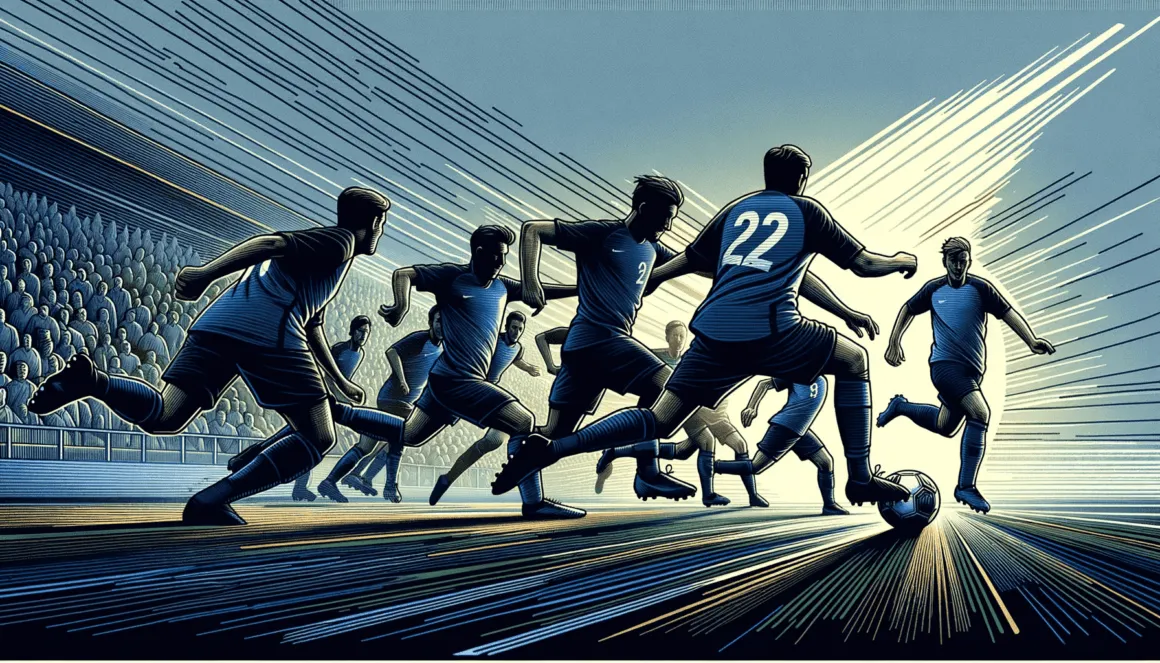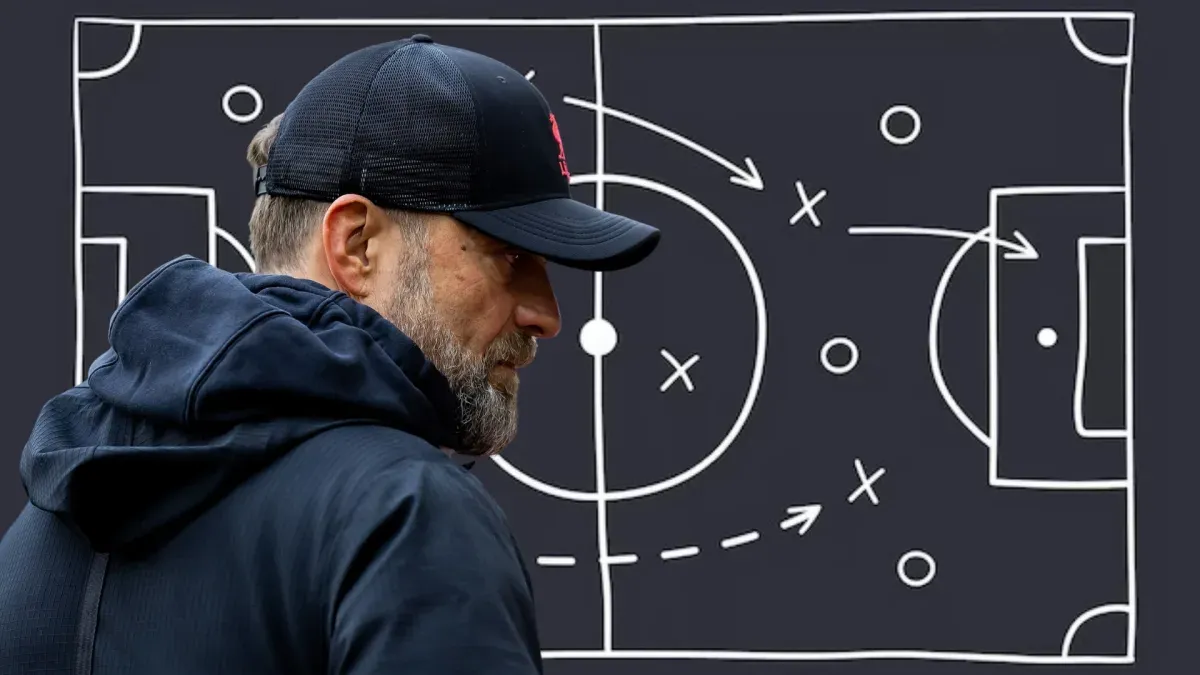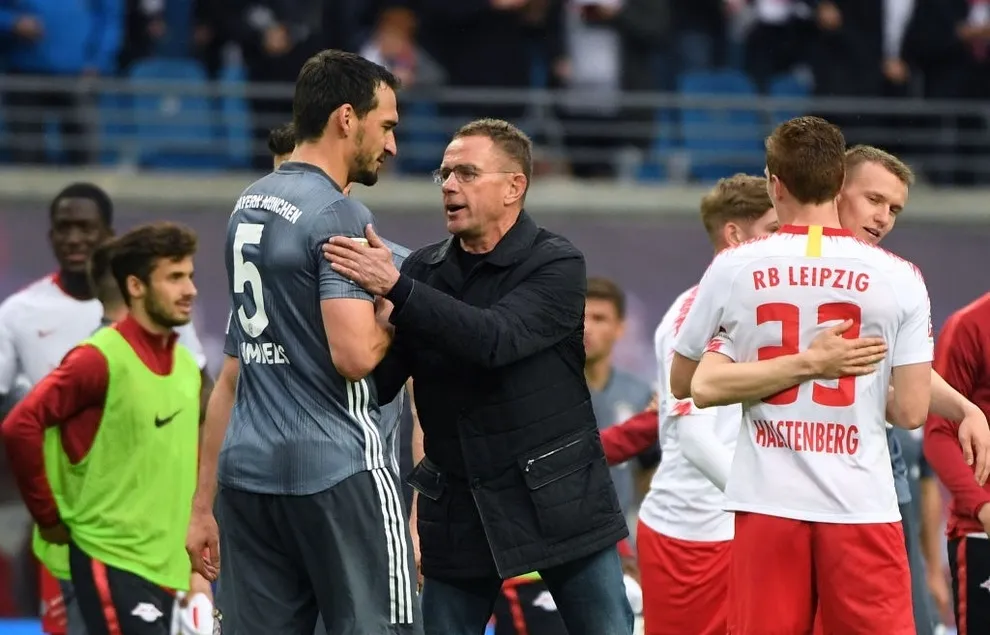Gegenpressing The Revolutionary Tactic Changing the Game of Football
Football, or soccer as it is known in some parts of the world, is a sport that has been around for centuries. It has evolved over time, from a simple game played by kicking a ball to the highly competitive and strategic sport we know today. And within this evolution, tactics have played a crucial role in shaping the game.
One such tactic that has gained popularity in recent years is Gegenpressing, also known as counter-pressing or pressing from the front. This high-intensity pressing tactic has revolutionized the way the game is played, and its impact can be seen in top leagues all around the world.
In this article, we will delve into the world of Gegenpressing – what it is, how it works, and its impact on modern football. We will also explore the different variations of Gegenpressing and its effectiveness in different contexts. So let’s dive in!

The Fundamentals of Gegenpressing
Before we dive into the intricacies of Gegenpressing, let us first understand the core principles that define this tactic. At its essence, Gegenpressing is a high-intensity, collective pressing tactic aimed at winning back possession of the ball immediately after losing it.
Principles of Gegenpressing
High Intensity
One of the defining features of Gegenpressing is its high intensity. Players are required to constantly press and chase down the ball, often at full sprint. This requires a high level of fitness and stamina from all players on the team.
The idea behind this high intensity is to suffocate the opposition and force them into making mistakes. By constantly putting pressure on the opponent, Gegenpressing aims to create turnovers in dangerous areas of the pitch, leading to quick attacking opportunities.
Constant Pressure
Gegenpressing is not a sporadic or occasional tactic, but rather a continuous one. Unlike traditional pressing tactics where players may drop back and regroup after a failed attempt to win back possession, Gegenpressing requires players to maintain constant pressure on the opposition.
This constant pressure does not allow the opponent any time or space on the ball, forcing them to make hasty decisions which can often result in turnovers.
Collective Effort
Another crucial aspect of Gegenpressing is the collective effort from all players on the team. This tactic relies heavily on coordinated pressing and positioning, with each player playing their part to maximize pressure on the opponent.
Gegenpressing requires a high level of discipline and understanding among players, as any breakdown in coordination can leave gaps for the opposition to exploit.
How does it work?
Now that we have a basic understanding of the principles of Gegenpressing, let us take a closer look at how it actually works on the field. There are three key components that make Gegenpressing an effective tactic – trigger events, ball-oriented pressing, and counterpressing.
Trigger Events
Trigger events are specific moments during a game that act as a signal for the team to initiate Gegenpressing. These can include:
- Opponent’s failed pass or touch: When an opponent makes a mistake and loses possession, it triggers the pressing team to immediately swarm the area and try to win back the ball.
- Set-pieces: Corners, free kicks, and throw-ins can also serve as trigger events for Gegenpressing. As soon as the ball goes out of play, the pressing team will quickly reset and start pressing again, aiming to win back possession before the opponent can set up their attack.
- Ball near the touchline: When the ball is near the touchline, it becomes easier to trap the opponent and force them into making mistakes. This is why teams often use the touchline as an extra defender while pressing.
Ball-Oriented Pressing
The main objective of Gegenpressing is to win back possession of the ball as soon as possible. This is where ball-oriented pressing comes into play. As soon as the trigger event occurs, the pressing team will focus on the player in possession of the ball, while other players will fill passing lanes and press nearby opponents to prevent them from receiving the ball.
The pressing team will try to create a numerical advantage around the player in possession of the ball, trapping them and forcing them into making a mistake. This requires a high level of coordination and discipline among players.
Counterpressing
Counterpressing is an essential aspect of Gegenpressing that allows teams to quickly win back possession if their initial pressing fails. If the opponent manages to escape the pressing trap and play through it, counterpressing kicks in. Players will immediately shift their focus to winning back the ball instead of trying to maintain pressure.
Counterpressing helps teams to regain possession before the opponent can set up their attack, thus preventing any potential threat.
Different Variations of Gegenpressing

While the core principles of Gegenpressing remain the same, there are various ways in which this tactic can be implemented on the field. Let us take a look at some of the different variations of Gegenpressing used by top teams.
Frontal Gegenpressing
Frontal Gegenpressing, also known as frontal pressing, is the most common form of Gegenpressing seen in modern football. In this variation, the pressing team focuses on the central area of the pitch, using a high defensive line and quick transitions to win back possession.
This form of Gegenpressing is often seen in a 4-3-3 or 4-2-3-1 formation, where the front three or four players are responsible for putting pressure on the opposition’s defenders and midfielders. The aim is to win back the ball in these dangerous areas and quickly transition into attacking opportunities.
Midfield Gegenpressing
As the name suggests, midfield Gegenpressing focuses on pressing in the middle of the pitch. This variation is often seen in a 4-3-3 or 4-2-3-1 formation, where the pressing team aims to win back the ball in the center of the pitch and transition quickly into attacking play.
This form of Gegenpressing requires highly mobile and versatile midfielders who can cover large areas of the pitch and maintain pressure on the opponent. It is also effective against teams that rely heavily on build-up play through the midfield.
Wide Gegenpressing
Wide Gegenpressing, also known as wing pressing, focuses on pressing in the wide areas of the pitch. This variation is usually seen in a 4-4-2 formation, where the wingers and full-backs work together to put pressure on the opposition’s wide players.
The aim of this tactic is to force the opponent to either play long balls or make mistakes while trying to build up on the flanks. It can be especially effective against teams that rely on their wide players for creating chances.
Variations in Formation
While the 4-3-3 and 4-2-3-1 formations are commonly associated with Gegenpressing, there are variations in formation that can also incorporate this tactic effectively. For example, a 3-4-3 formation can allow for two aggressive wing-backs to join the attack while maintaining a solid defensive structure in the middle.
On the other hand, a 4-1-4-1 formation can provide a strong central presence while still allowing for quick counterpressing when needed. The key is to adapt the formation according to the strengths and weaknesses of the team and the opponent.
Matching Opponent’s Formation
Another approach to Gegenpressing is to match the opponent’s formation and adapt accordingly. This requires a high level of tactical flexibility and understanding among players, but it can be very effective in nullifying the opponent’s strengths and exploiting their weaknesses.
For example, if the opponent is playing with three center-backs, the pressing team can match them with a 3-4-3 formation and try to outnumber them in midfield. This not only allows for better defensive cover but also provides more passing options while building up from the back.
Effectiveness of Gegenpressing

Gegenpressing has become one of the most talked-about tactics in modern football, and for good reason. Its high-intensity and aggressive nature have proven to be highly effective in winning back possession and creating attacking opportunities. However, like any tactic, it comes with its own set of advantages and limitations.
Advantages of Gegenpressing
Quick Transition from Defense to Attack
One of the main advantages of Gegenpressing is its ability to quickly transition from defense to attack. By winning back possession in dangerous areas, teams can immediately launch a counterattack before the opposition has time to regroup and defend.
This quick transition can catch opponents off guard and lead to some of the most exciting and goal-scoring opportunities in football.
Creating Turnovers in Dangerous Areas
Gegenpressing is all about putting pressure on the opponent and forcing them into making mistakes. By constantly pressuring the opposition players, Gegenpressing aims to create turnovers in dangerous areas of the pitch, close to the opponent’s goal.
This not only gives the pressing team a chance to score but also denies the opponent any opportunity to build an attack.
Fatiguing the Opponent
The high-intensity nature of Gegenpressing requires all players on the team to constantly run, press, and chase the ball. This can be physically and mentally exhausting for the opponent and can lead to fatigue as the game progresses.
As the opponent becomes tired, they are more likely to make mistakes, leading to turnovers and goal-scoring opportunities for the pressing team.
Limitations of Gegenpressing
High Risk, High Reward
One of the main limitations of Gegenpressing is its high-risk nature. By constantly pressing and leaving gaps in defense, teams are more vulnerable to counterattacks if the opponent manages to break through the pressing trap.
This high risk can lead to conceding goals, which can be detrimental in a match. However, for teams that have mastered Gegenpressing, the rewards often outweigh the risks.
Requires High Level of Fitness
As mentioned earlier, Gegenpressing requires a high level of fitness and stamina from all players on the team. This can be a challenge for some teams, especially those with older or less fit players.
Teams looking to implement Gegenpressing must prioritize physical training and conditioning to ensure that their players can maintain the high-intensity throughout the game.
Vulnerability to Counterattacks
Gegenpressing relies heavily on winning back possession quickly before the opponent has a chance to set up their attack. However, this also means that if the initial pressing fails, the team is left exposed and vulnerable to counterattacks.
Teams must be cautious and strategically time their pressing to avoid being caught off guard by a well-timed counterattack.
Successful Implementations of Gegenpressing

Over the years, we have seen many successful implementations of Gegenpressing in top leagues around the world. Let us take a closer look at some of the most notable examples.
Jurgen Klopp’s Dortmund
Jurgen Klopp is widely regarded as one of the pioneers of Gegenpressing in modern football. During his time at Borussia Dortmund, he implemented a high-intensity pressing tactic that helped his team achieve great success both domestically and in Europe.
Under Klopp’s leadership, Dortmund became known for their relentless pressing style, winning back possession quickly and launching quick counterattacks. They won two Bundesliga titles, one DFB-Pokal, and reached the UEFA Champions League final in 2013.
Pep Guardiola’s Bayern Munich
Pep Guardiola is another manager who has successfully implemented Gegenpressing in his teams. During his time at Bayern Munich, he combined Gegenpressing with tiki-taka possession football, creating a unique and highly effective style of play.
Bayern achieved great success under Guardiola, winning three Bundesliga titles, two DFB-Pokals, and reaching the semifinals of the UEFA Champions League three times in a row.
Ralph Hasenhuttl’s RB Leipzig
Ralph Hasenhuttl’s RB Leipzig is a prime example of how smaller teams can use Gegenpressing to their advantage. In their debut season in the Bundesliga, Leipzig finished second and qualified for the UEFA Champions League, playing an aggressive and high-intensity pressing game.
Hasenhuttl’s philosophy of “full-throttle” football caught the attention of the football world, and Leipzig became known as one of the most exciting and dynamic teams in Europe.
Liverpool under Jurgen Klopp
Jurgen Klopp’s current team, Liverpool, is another great example of successful implementation of Gegenpressing. Under his leadership, Liverpool has transformed into one of the top teams in Europe, winning the UEFA Champions League in 2019 and the Premier League in 2020.
Liverpool’s high-intensity pressing and counterpressing have become their trademark, making them a force to be reckoned with in every match.
Future of Gegenpressing
As football continues to evolve, tactics will also continue to change and adapt. While Gegenpressing has already made its mark on modern football, there is still room for growth and development in the future.
Adaptation by Smaller Teams
Gegenpressing was initially popularized by top teams with talented players and resources at their disposal. However, we are now seeing smaller teams also adopting this tactic and achieving success with it.
As more teams adapt to Gegenpressing, we can expect to see a more level playing field in terms of tactics, making for an even more exciting and unpredictable game of football.
Integration with Other Tactics
While Gegenpressing is often implemented as a standalone tactic, we are starting to see teams integrate it with other tactics to create a more well-rounded approach. For example, teams may use Gegenpressing in the first half to tire out the opponent and then switch to a more defensive approach in the second half to hold onto their lead.
This integration of tactics not only adds variety to the game but also makes it more challenging for opponents to predict and counter.
Potential Impact on Modern Football
Gegenpressing has already had a significant impact on modern football, but its potential is far from exhausted. As more teams adopt this tactic and adapt it to their style of play, we can expect to see more aggression, intensity, and excitement on the field.
Moreover, the focus on high-intensity pressing has also led to an increased emphasis on physical fitness and conditioning among players, which can have a positive impact on the overall quality of football.
Conclusion
Football is a constantly evolving sport, and Gegenpressing is just one of the many tactics that have had a profound impact on the game. Its high-intensity and aggressive nature have made it a popular choice among top teams, and its effectiveness is evident in the success achieved by those who have implemented it successfully.
In this article, we have explored the fundamentals of Gegenpressing, its variations, its effectiveness, and some successful implementations of this revolutionary tactic. We have also discussed the limitations and potential future developments of Gegenpressing, showing that this tactic is here to stay and will continue to shape the game of football for years to come.